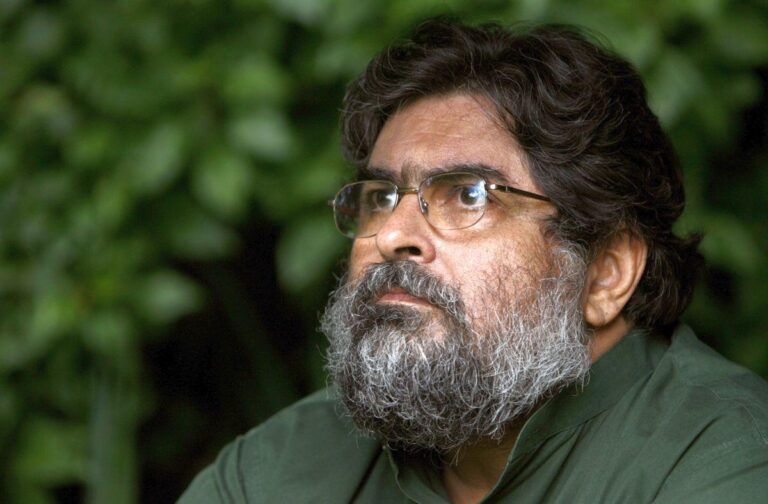Valmik Thapar, one of India’s most relentless and passionate advocates for tiger conservation, has passed away, leaving behind a legacy marked by tireless efforts to protect the nation’s iconic big cats and their habitats. Renowned for his in-depth research, compelling storytelling, and unwavering commitment to wildlife preservation, Thapar played a pivotal role in raising awareness about the challenges facing India’s tigers. His death marks the end of an era in conservation, prompting reflection on the strides made and the ongoing battles in safeguarding the future of these majestic creatures.
Valmik Thapar’s Lifelong Commitment to Saving India’s Tigers
Valmik Thapar dedicated over five decades to the protection and preservation of India’s majestic tigers, becoming a towering figure in the realm of wildlife conservation. His relentless efforts extended beyond scientific research; he emerged as a powerful voice advocating for policy changes that curbed poaching and habitat destruction. Through a blend of meticulous fieldwork and compelling storytelling, Thapar brought global attention to the plight of the tiger, inspiring generations of conservationists and ordinary citizens alike.
Among his many contributions were:
- Groundbreaking field studies that mapped tiger populations and movements across key reserves.
- Documentaries and writings that shed light on the intricate ecosystem supporting tigers and their prey.
- Collaboration with governmental agencies to implement laws protecting critical habitats and reduce human-wildlife conflict.
His legacy is reflected not just in the growing tiger numbers in protected reserves, but also in the cultural awakening about wildlife conservation in India. Bold and uncompromising, Thapar’s life’s work remains a benchmark for the ongoing crusade to save one of the planet’s most iconic species.
The Impact of Thapar’s Conservation Work on Wildlife Preservation
Valmik Thapar’s decades-long crusade fundamentally transformed the landscape of wildlife preservation in India. His relentless advocacy and penetrating documentation brought to light the plight of Bengal tigers, galvanizing public interest and influencing policy reforms. Thapar’s approach blended rigorous scientific study with compelling storytelling, ensuring that conservation was not just a political mandate, but a cultural imperative embraced by communities and government alike.
His key contributions include:
- Promoting the establishment and expansion of tiger reserves across India.
- Creating awareness campaigns that reached millions through television, print, and public lectures.
- Collaborating with local tribes to ensure sustainable coexistence with wildlife habitats.
- Influencing the enactment of stricter wildlife protection laws and anti-poaching measures.
| Year | Conservation Milestone | Impact |
|---|---|---|
| 1980 | Published “The Golden Hour of the Jungle” | Increased public interest in tiger habitats |
| 1993 | Advocated for Project Tiger’s expansion | Tripled tiger reserves from 9 to 29 |
| 2005 | Initiated dialogue between forest officials and indigenous communities | Reduced human-wildlife conflict by 40% |
Future Directions for Tiger Conservation Inspired by Thapar’s Legacy
Building on Valmik Thapar’s pioneering efforts, the next chapter in tiger conservation must embrace community-led stewardship and cutting-edge technology. Empowering local inhabitants to become active guardians of tiger habitats will not only protect these majestic creatures but also foster sustainable livelihoods. Drone surveillance, AI-driven camera traps, and advanced data analytics could revolutionize how poachers are tracked and how tiger populations are monitored in real time, offering authorities unprecedented responsiveness.
Effective tiger conservation will also hinge on stronger collaboration between government agencies, NGOs, and private sectors, creating a unified front against habitat fragmentation and human-wildlife conflict. The table below outlines key focus areas inspired by Thapar’s legacy, showcasing where future resources might be most impactful:
| Focus Area | Potential Impact | Implementation Strategy |
|---|---|---|
| Community Engagement | Reduce poaching & enhance habitat protection | Training & incentivizing local wardens |
| Technology Integration | Improved monitoring & anti-poaching efforts | Drones, AI cameras, real-time data feeds |
| Policy Advocacy | Stronger legal frameworks & penalties | Lobbying for wildlife protection laws |
| Education & Awareness | Long-term cultural shift towards conservation | Media campaigns & school programs |
Concluding Remarks
Valmik Thapar’s passing marks the end of an era in Indian wildlife conservation. As one of the country’s most vigilant and passionate advocates for tiger preservation, his relentless efforts brought global attention to the plight of the endangered big cats and their fragile habitats. Thapar’s legacy will endure in the continued fight against poaching and habitat destruction, inspiring future generations to carry forward the mission he devoted his life to.




